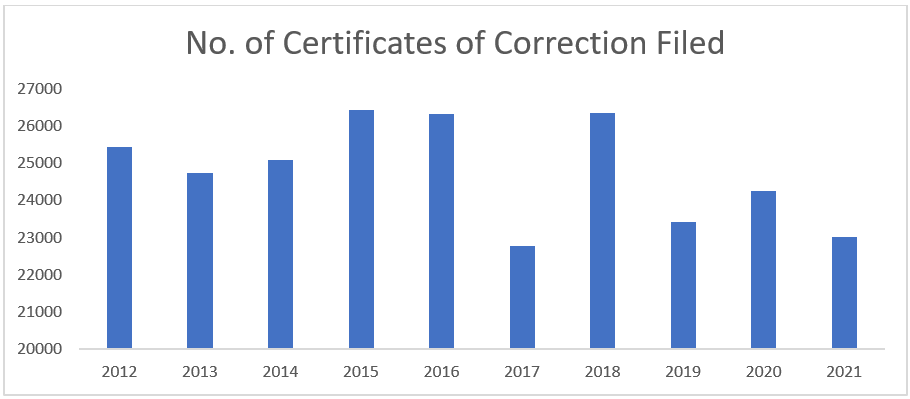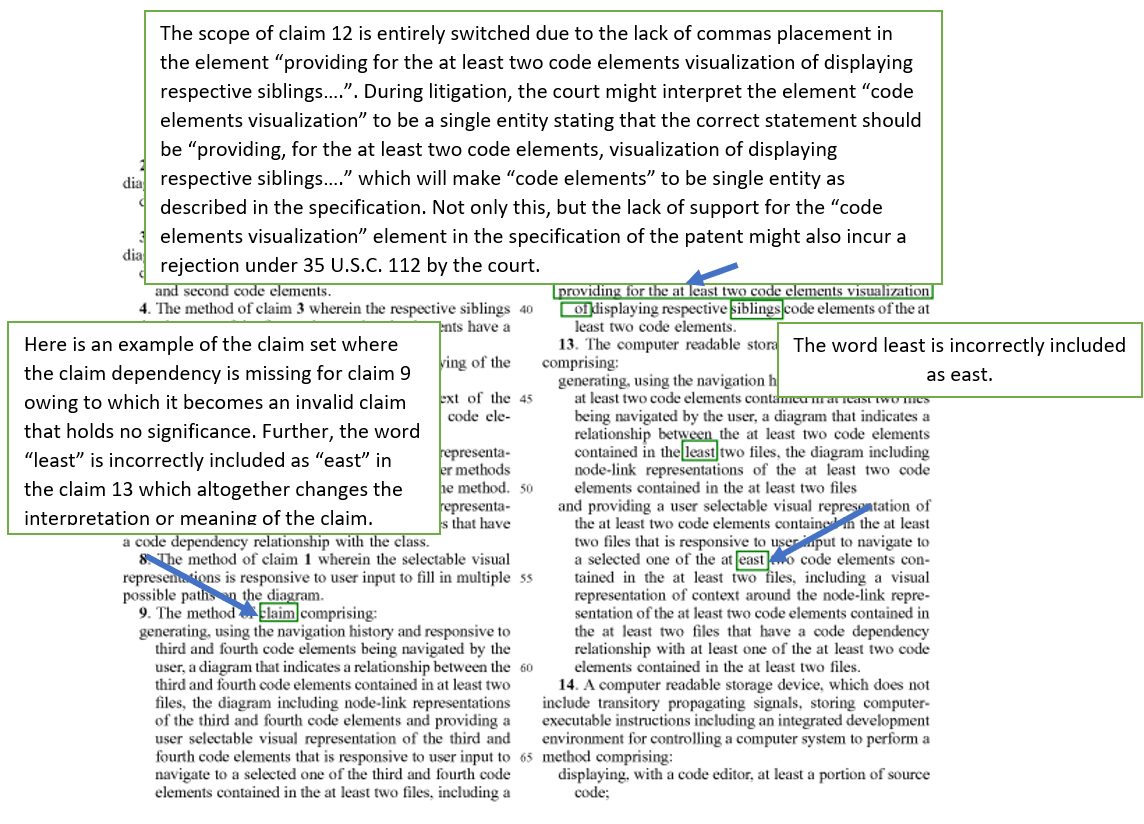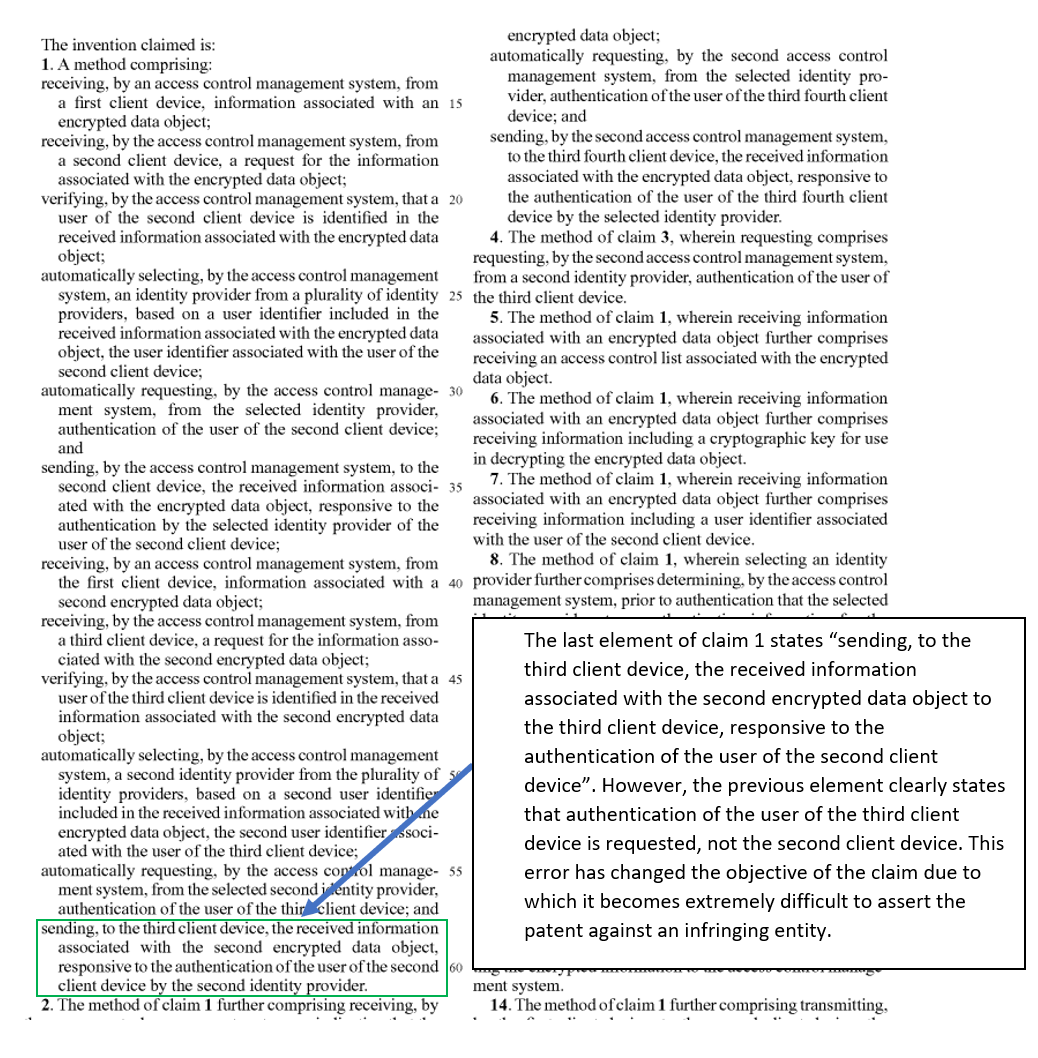Patent proofreading is vital. Errors in patents are inevitable and mistakes can be costly. In fact, some errors can change the scope of the patent and defeat its purpose. In addition, proofreading patents identifies grammatical errors and helps to surface any missing amendments.
According to a study performed a few years ago, almost 98% of U.S. patents had at least one mistake and 50% of these mistakes were made by United States Patent and Trademark Office (USPTO) during the prosecution stage. Most of the errors were changes made to the claims, specification, and drawings that were not reflected in the final document.
Consequences of not proofreading your patent
In 2015 litigation, the Eastern District of Texas court invalidated two patent claims as indefinite and refused to accept plaintiff’s argument that any indefiniteness was the result of a typographical error by the patent examiner.
The court mentioned if the disputed claims contained an obvious clerical error, plaintiff could have sought to correct the error with the USPTO by filing a certificate of correction.
The patent process is complex with multiple amendments, consistent communications, and several submissions during the prosecution. Since mistakes are unavoidable, proofreading is essential. The chart below depicts the number of certificates of correction filed in the last 10 years at USPTO.

The above tells us a substantial number of granted patents have errors and patent owners filed for corrections. Again, we see the importance of having your patent proofread and correcting any errors that arise.
Let us dive into a couple of examples to see how the scope of the claims could be adversely affected due to errors:

Below is another example where the wrong choice of words, which were ignored before getting the patent granted, impacted the scope of the claim:

Proofreading identifies and rectifies errors in Assignee or Inventor names, references cited by applicant or examiner, as well as the drawings, specification and claims of the issued patent by filing a certificate of correction with the USPTO for the discrepancies identified during the proofreading. A proof-reader checks the entire patent for any discrepancy between the application filed and the issued patent. The proof-reader also checks for all the amendments filed during the process and ensures that they are incorporated in the issued patent.
No one wants to have typos and grammatical errors in their work. For that reason alone, having your patent proofread is worth the investment. However, patent proofreading is important beyond the issue of professionalism. Errors in patents can place their purpose in legal jeopardy, threatening to derail a client’s investment. To ensure accuracy, quality, and profitability – patent proofreading is an essential addition to the overall patent process.














